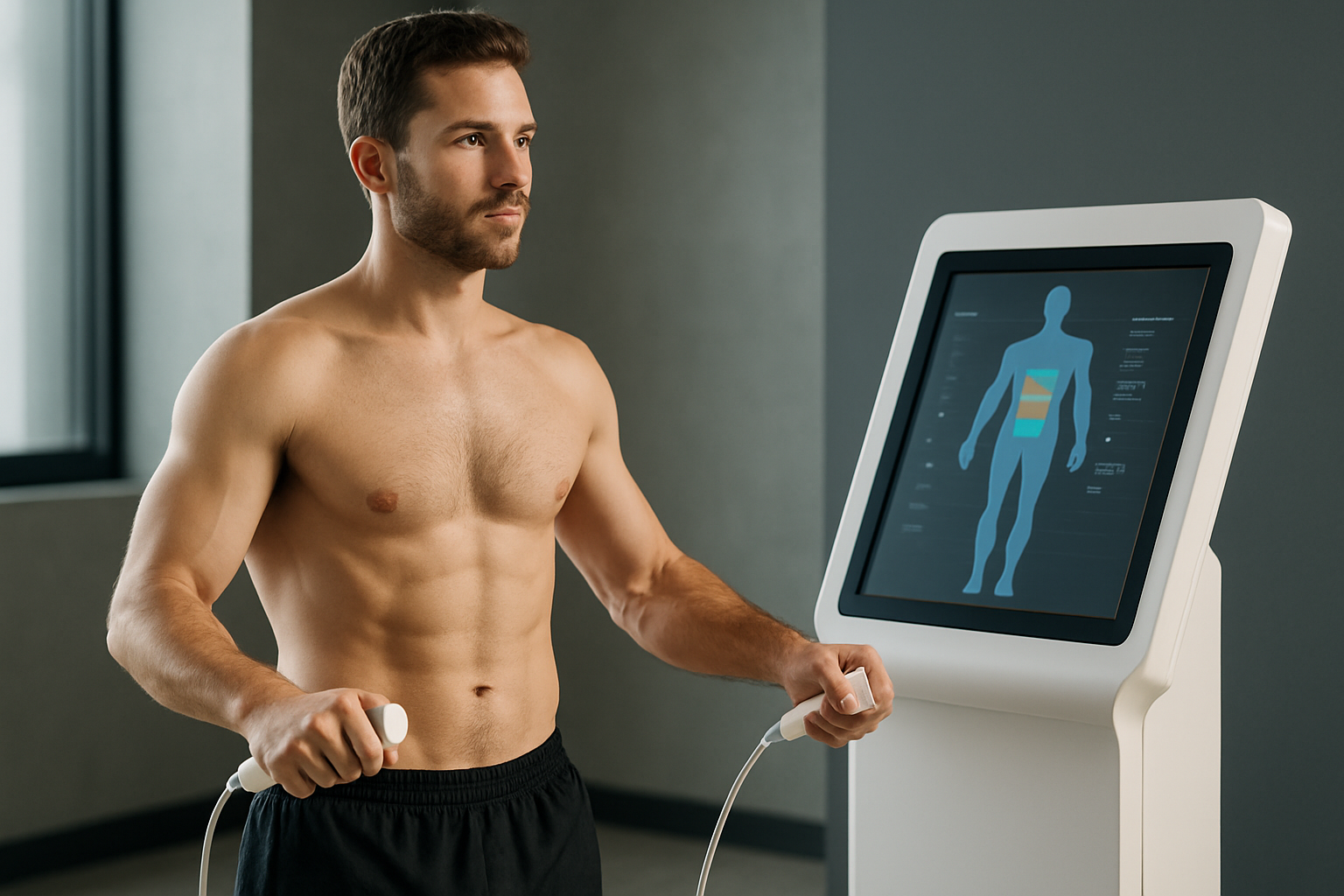Bioelectrical Impedance Analysis: Unveiling Body Composition Secrets
Are you curious about what's really going on inside your body? Imagine a technology that can peer beneath your skin, revealing the intricate balance of fat, muscle, and water that makes you uniquely you. Welcome to the world of Bioelectrical Impedance Analysis (BIA), a revolutionary method that's transforming how we understand and monitor our health.

The Science Behind the Buzz
At its core, BIA relies on the principles of electrical conductivity. When a low-level electrical current is introduced to the body, it travels through the water found in hydrated muscle tissue. Fat tissue, containing less water, impedes this flow. Advanced BIA devices use multiple frequencies to distinguish between intracellular and extracellular water, providing a more nuanced picture of body composition.
The technology has come a long way since its inception in the 1960s. Modern BIA devices range from simple handheld units to sophisticated full-body scanners used in medical and research settings. These advancements have made BIA an increasingly popular tool for health assessment, fitness tracking, and nutritional planning.
Beyond the Scale: Why Body Composition Matters
Traditional weight measurements fall short in providing a comprehensive view of health. Two individuals with identical body mass index (BMI) can have vastly different body compositions, leading to different health outcomes. BIA offers insights that go far beyond what a standard scale can tell you:
- Fat Mass: Excessive body fat is linked to various health risks, including cardiovascular disease and diabetes.
- Muscle Mass: Higher muscle mass is associated with better metabolism, strength, and overall health.
- Water Content: Proper hydration is crucial for numerous bodily functions and can indicate health issues when imbalanced.
- Bone Density: Some advanced BIA devices can estimate bone mineral density, a key factor in assessing risk for osteoporosis.
By providing a detailed breakdown of these components, BIA empowers individuals and healthcare professionals to make more informed decisions about diet, exercise, and treatment strategies.
Applications Across Health and Fitness Spectrums
The versatility of BIA has led to its adoption across various fields:
- Clinical Settings: Hospitals and clinics use BIA to monitor patients’ nutritional status, particularly in cases of chronic diseases or during recovery from illness or surgery.
- Sports and Fitness: Athletes and fitness enthusiasts leverage BIA to track changes in muscle mass and body fat percentage, fine-tuning their training and nutrition plans.
- Nutrition Counseling: Dietitians employ BIA to assess clients’ body composition, tailoring dietary recommendations to individual needs.
- Research: Scientists utilize BIA in studies exploring body composition’s role in health, aging, and disease prevention.
Precision and Limitations: Understanding BIA’s Capabilities
While BIA offers valuable insights, it’s important to recognize its limitations. Factors such as hydration status, recent physical activity, and even the time of day can affect measurements. For the most accurate results, it’s crucial to follow proper testing protocols, such as maintaining consistent hydration and avoiding exercise before the test.
Moreover, the quality of the BIA device significantly impacts its accuracy. Professional-grade machines used in clinical settings typically provide more reliable results than consumer-grade devices. However, even consumer devices can be useful for tracking trends over time when used consistently.
The Future of Body Composition Analysis
As technology advances, so does the potential of BIA. Emerging trends in this field include:
- Integration with Wearable Technology: Future smartwatches and fitness trackers may incorporate BIA sensors, providing continuous body composition monitoring.
- Artificial Intelligence Analysis: Machine learning algorithms could enhance the interpretation of BIA data, offering more personalized health insights.
- Combination with Other Technologies: Integrating BIA with other assessment tools, such as 3D body scanning, could provide an even more comprehensive view of body composition and health.
Maximizing Your BIA Experience
- Consistency is key: Take measurements at the same time of day, preferably in the morning before eating or drinking.
- Stay hydrated: Proper hydration ensures more accurate results.
- Avoid exercise before testing: Physical activity can temporarily alter your body’s water distribution.
- Use the same device: Different BIA machines may yield slightly different results, so stick to one for tracking progress.
- Consider professional assessments: For the most accurate analysis, seek out facilities with high-grade BIA equipment.
Bioelectrical Impedance Analysis represents a significant leap forward in our ability to understand and monitor body composition. By providing detailed insights into the complex makeup of our bodies, BIA offers a powerful tool for enhancing health, fitness, and overall well-being. As this technology continues to evolve, it promises to play an increasingly vital role in personalized health management, empowering individuals to make more informed decisions about their lifestyle and health choices.





